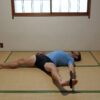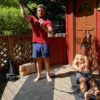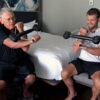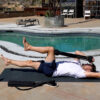If you’re familiar with fitness techniques, you’ve probably heard of isotonic and isometric exercise, the two ways to build and strengthen muscles. You might not know the exact definitions of the two terms, or you may find yourself using them interchangeably without meaning since the names are so similar.
Isometric vs Isotonic Exercises
To set things straight, isometric exercises are done by creating muscle contractions without moving the focused parts of the body. Isometric exercise involves contracting a muscle or muscle group and maintaining a still posture so that the joints involved don’t move. Think of holding a squat, planks, wall-sits, or any physical yet stationary activity that starts with tension and ends with you needing to catch your breath.
Isometric exercise has plenty of benefits. They are efficient, build muscles, and if you’re looking to quit smoking or bad habits, a brief spurt of that localized tension can help alleviate a craving. Isometric exercises can improve your stamina and give you an extra head start on tackling any endurance events you may find yourself in.
Isometric exercise is also an excellent way to raise your heart rate when you need a break from cardio or are recovering from an injury. And because isometric exercises are designed to be performed in brief spurts, they are perfect for stationary HIIT training.
Isotonic exercise is a training method that involves a muscle contracting with steady tension against a constant load – like a weight, for instance. We do this type of exercise most often in life, in and outside of a fitness environment. Bicep curls and deadlifts are forms of isotonic exercise, sure, but so is walking the dog or even lifting your groceries and putting them back down!
Speaking more specifically, isotonic exercise can be further broken down into concentric and eccentric muscle contractions.
The specific definitions of these terms can be a little hard to parse, so let’s present them in the form of a hypothetical. When you imagine someone weightlifting, it’s easy to see what the one constant movement involved really consists of.
When you move the weight up and you push against the weight’s resistance, that’s concentric muscle contraction. And then when you lower the weight back down, your muscles are elongating; that’s eccentric contraction.
Benefits of Isotonic Exercises
Gain Muscle Mass
You’ll find similar dynamics to this in exercises like stair climbing or through working the elliptical. Gaining muscle mass through this kind of training is a good way to thrive under the strain of an average day, and you can even support that growth outside the gym by doing something as simple as taking the stairs instead of waiting for the elevator.
Looking for benefits of both isometric and isotonic exercises?
Try this killer chest workout that leverages the power of both isotonic and isometric exercise.
Improve Heart Health
This type of isotonic exercise, and others like it, can do more than improve muscle mass and tone. A good iso-based regiment can also increase oxygen consumption and reduce the risk of heart disease. Isotonic exercises also burn calories and improves cholesterol, leaving your health and mood greatly improved.
Safely Recover from an Injury
That’s why they’re a valued part of physical therapy. Under low resistance, isotonic exercise can be a great tool to repair damaged muscle. A steady routine will help greatly in improving muscle strength and range of motion, and with a few simple changes, the level of resistance can be adjusted depending on the patient’s needs.
Isotonic Exercises You Can Do Today
Isotonic exercise can be done with or without equipment. When choosing equipment there’s plenty to pick from, and we’re including some of our own bestsellers into the list below. But if you’re slogging through your current workout to-and-fro, it could be that what you need is a little bit of spice to give you a boost of passion.
Isotonic exercise methods might push you out of your comfort zone, but they can give you a way to form new experiences as you build muscle. Add variety to your workout with the following five powerful isotonic exercises.
1. Parcourse Trails
If the exertion of hiking isn’t enough for you, there’s an index of Parcourse trails located all around the United States. A parcourse trail isn’t much different from any other hiking trail, but it includes several stops around the path with outdoor exercise equipment. This can be a bar for pull-ups, platforms for sit-ups, or some kind of balancing practice.
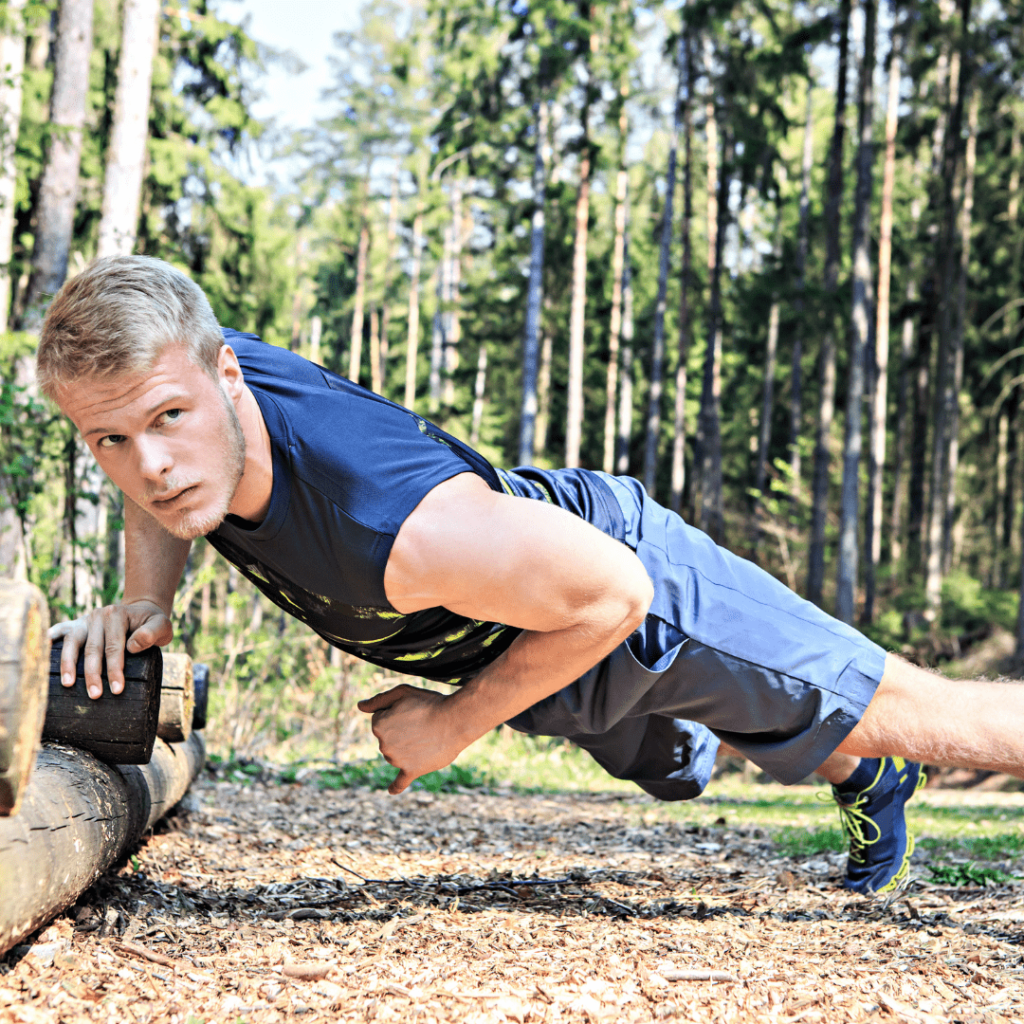
If you’re a regular hiker, you’re probably familiar with stopping to catch your breath at the top of a hill, or that ache in your legs at the end of the day. Hiking is a great cardio workout that some say rivals what you can get in the gym, and it can allow you to strengthen your legs and improve your blood pressure without putting much strain on your joints.
Whether you workout in the garage or in the gym, you’re probably going to get tired of staring at the same four walls every day. Getting out into nature is a great way to refresh yourself, and there’s even a benefit you can reap just by using natural sunlight to get your needed Vitamin D. In addition to that, spending time outdoors can lower stress levels in the body – further benefiting your overall wellness.
What you’ll find on these kinds of trails isn’t gym-grade equipment, but with the open air and the sights and sounds of nature all around you, it’s hard to mind.
2. Deep Clean (two birds, one stone)
It’s easy to put off deep cleaning your house. We tend to stick to maintenance cleaning, but a good deep clean won’t just benefit your home. With a few small adjustments, a deep clean can actually be a great opportunity for building strength through isotonic exercise.
The key to transforming an afternoon clean to an afternoon workout is intensity. You can’t cut corners or rush to get on with the rest of your day; you should approach it with the same intent as you would any other isotonic exercise. And put some elbow grease into it.
Lunges
When you’re cleaning, you have to retrace your steps frequently. Make those steps count! While you’re vacuuming and mowing the grass, make the most of your time by incorporating lunges as you work your way across the carpet or lawn.

Toe Raises
Housework constantly has you straining to reach high places. Whether it’s in the garden, reaching to prune those higher branches or indoors, trying to dust tall bookshelves or the ceiling fan, opportunities to add toe raises to your cleaning regime are endless. With some intentionality, boring house work can lead to toned calves and leg strength.
Squats
Anytime your housework involves lifting something heavy, up the intensity a bit by doing five or more squats while carrying the weight. Be creative! A heavy bag of mulch, a full basket of laundry, or even a box of items to donate can make the perfect weights for your squats.
The studies behind cleaning and overall fitness are still debatable. It’s clear that doing chores will burn calories, but we all know there’s more to fitness than that. There was, however, a study at the Cooper Institute for Aerobics Research, which compared participants who did traditional gym exercises with those who added fitness to their daily routine, and they found that the results were remarkably similar.
This can be great news for those of us who don’t feel like we have the time or money to fit in a proper strength-building workout at a club. It might also be an extra push of truth for those of us using that as an excuse, as it’s becoming more and more impossible to claim you’re “too busy” to get in shape. Either way, tackling that much needed deep clean is an opportunity for exercise you won’t want to skip.
3. Dance it out
Dancing of any kind is a full-body workout for anyone. An average dance class burns more calories than jogging while engaging and toning core muscles. It’ll work all across your arms, legs and glutes, assuming you make sure to steady your abs while you do it.
In dance, isotonic and isometric exercise is described as a “dynamic” or “static” contraction. What you see on the ballet stage or through the glass of a Zumba class isn’t just random movements set to songs, it’s a constant question of which muscles are meant to be engaged in movement versus which should be stabilized. It looks pretty, but there’s actually a lot of work put behind it.

You don’t have to find a studio and take an in-person dance class in front of a dozen other strangers. That can be an incredibly intimidating concept, especially if you’re only just experimenting with a new kind of movement. There are plenty of videos dedicated to providing basic to advanced steps that you can use from the comfort of your home. Move with Colour in particular is a great source for videos that focus on strength-building choreography.
This is a great opportunity to instill strength and muscle building techniques in a way the whole family can enjoy. And once you’ve got a few moves under your belt, you can get some movement in without a video. Just make a playlist of only the greatest hype jams, and dance it out. You can be alone or with loved ones – the groove doesn’t discriminate!
4. Toning With the Bow Classic
At Bullworker, we carry a large selection of equipment you can use for isotonic training. What started our journey over fifty years ago was the 36” Bullworker, also known as the Bow Classic. It works as a tool for both isotonic and isometric training, and it’s design is easily used by people of all fitness levels.
You can pull the cable grips, creating a similar effect to what you would do in the gym or there are you can compress the Bullworker using the handles. These are your two movements, push and pull to train your entire body regardless of how you train. In addition, you can maintain tension in an isometric exercise or go through reps for an isotonic workout. Follow a routine or create your own with a wide breadth of uses for this handy device.
It’s called the Barbell of Bullworker’s collection, specializing in developing the legs, glutes, chest, and back. Bullworker also offers five resistance spring levels that go from 0-40lbs to 0-160lbs. This 5-in-1 applicability makes it a versatile tool for working in iso-based training in a fraction of the time you might spend in the gym.
This works for you if you don’t have access to a gym or are dealing with such a tight schedule that you have to plan your bathroom breaks a week in advance. The Bow Classic is phenomenal piece of portable exercise equipment – compact enough that you can keep it anywhere in your house, in the trunk or next to the desk in your office. It’s built to be within hand’s reach without any setup needed, giving you the chance to burn fat and build muscle on your own terms.
5. Finding Flow with ISO-FLO
Some iso-training equipment tends to be a little cumbersome to carry. Bullworker noticed that, and from that thought came the ISO-FLO, which uses your body’s natural range of motion as the power needed to build strength and muscle. And it does this while working with a hassle-free design that you can easily fit in a backpack.
The ISO-FLO gives you the chance to bring a gym-grade isotonic exercise literally anywhere. So take advantage of that! If you can’t find a Parcourse trail in your area, find another hiking trail, and bring this handy device with you. Work your legs on any inclines or dips that you may find, and every so often, take a break and strap into the ISO-FLO to let your arms and upper body get in on the action.
You can train while you’re on the beach or standing in front of the TV, before your yoga class, or between meetings. If your lifestyle makes it difficult to find the time and space to get out to the gym before the sun rises or after a long day at work, you no longer have to worry.
Your exercise – isotonic or isometric – isn’t limited to the few hours a week you devote to training. There are moments of isotonic exercise throughout your day. All you have to do is find the opportunity and take it, even if it pushes you out of your comfort zone.
Conclusion:
Using creativity and ingenuity to create a workout regiment that fits within your life and schedule will do more than build muscle. It’s an act of creativity that will revitalize your life, leaving you not only fitter in the long run, but also more fulfilled. Make your fitness more than just a habit; make it a lifestyle you can enjoy.
